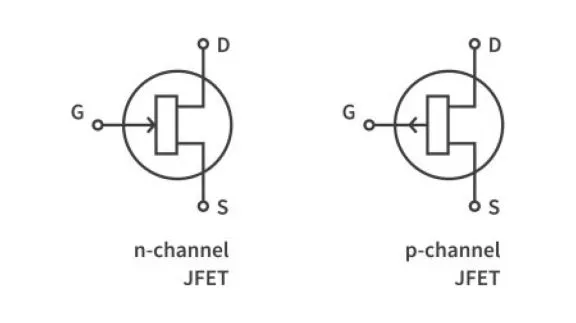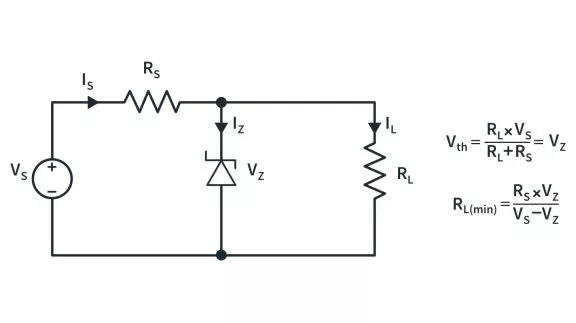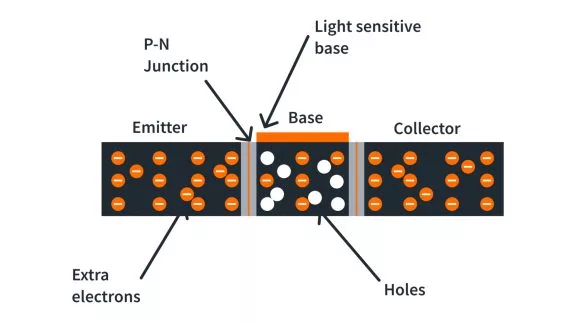555 Timer - 1. Introduction to 555 Timers
Published
The 555 timer oscillator or, as commonly referred to, 555 timer, is an extremely popular IC for timing-related applications. They are robust and versatile, as they can be used in any circuit which requires some sort of time control. It can be used to generate various types of pulses, to create time delays, and also for Pulse Width Modulation (PWM). The most common use of 555 timers is to generate clock signals for circuits.
It is popularly believed that the name 555 was chosen because of the three 5kΩ resistors in the IC, but Hans Camenzind, the inventor of the 555 timers said in an interview that it was arbitrarily chosen by one of his colleagues. I guess you can’t believe everything you hear on the internet.
Let us take a look at what's inside a 555 timer and how these electronic components work together to perform a variety of applications.
Inside the 555 Timers
The figure below shows a basic block diagram and pinouts of the 555 timers. 555 ICs generally come in an 8-pin DIP package. It consists of 2 comparators, a voltage divider circuit, a flip flop, a discharge transistor, and an output circuit.

The first part of the block diagram is the voltage divider circuit. The voltage divider is made using three 5k resistors. As the resistors are of the same value, an equal voltage gets divided between the three resistors. The voltages across these resistors are given as reference voltages to the comparators. If you want to understand how the voltage is divided across resistors having different values, check out our tutorial - Voltage Divider | CircuitBread.
A comparator is a special configuration of an operational amplifier. It compares the voltage on its inputs and outputs a high or low voltage depending on whether the voltage on the inverting or non-inverting input is higher.
- The inputs to the upper comparator or the threshold comparator are the threshold pin connected to the non-inverting input (+), and a reference voltage of 2/3 Vcc is connected to the inverting input (-) of the comparator.
Another external pin “Control Voltage” is connected to the inverting input (-) of this comparator which lets us override the reference voltage of 2/3 Vcc and this allows us to change the width of the output signal. - For the lower comparator or the trigger comparator, 1/3 Vcc reference voltage is given to the non-inverting input (+) and the trigger pin is connected to the inverting input (-) of the comparator.
The outputs of the comparators are given as inputs to a flip flop. An SR flip-flop is a memory element that can store and output a logic “0” or logic “1” depending on the two inputs SET and RESET or S and R, respectively. The outputs of the flip flop are Q and QBAR, where Q and QBAR are the complements of each other.
The output of this flip-flop is then given to the output driving circuit to raise the current levels and is then finally passed to the external output pin of the IC.
Working of the 555 Timers
Understanding the working of 555 timers can be a little overwhelming at the first look, so to make the process a little bit easier, we’ve divided the circuit into two parts. Let's look at the first part of the circuit having the voltage divider and comparators.

The behavior of the 555 timers is controlled by the three input pins: Threshold, Trigger, and Control Voltage.
When the voltage on the threshold pin increases above the 2/3 Vcc reference voltage, we get a logic “1” at the output “A”. Otherwise, the output “A” is a logic “0”.

When the voltage on the trigger pin is less than the 1/3 Vcc reference voltage, we get a logic “1” at output “B”. Otherwise, we get a logic “0”.
Then comes the role of the second part of the circuit: SR Flip-Flop and the output driving circuit. There are two inputs to our flip flop: the output of the threshold comparator labeled as “A” connected to R, and the output of the trigger comparator labeled as “B” connected to S.

The table below represents the truth table of a basic SR Flip-flop. When the SET or S input is logic “1”, it sets the flip flop to output a logic “1” and when the RESET pin is logic “1”, the flip-flop outputs a logic “0”. When both S and R are logic “0”, the flip flop stores the previous value or acts as a memory element. And when both are logic “1”, we enter an invalid state of operation of the flip-flop.

For now, we are only interested in the cases when only one of the inputs is a logic “1” and the other is logic “0”. Figure 5 represents how the outputs of the comparators, A and B, affect the output of the flip flop. The important thing to note here is that we take the output of the flip flop from QBAR and not Q.

The output of this flip-flop is then passed to the output driving circuit which raises the current levels to drive loads up to 200mA. This allows us to connect loads directly to the output pin of the IC. A crucial thing to note here is that the output driving circuit is an inverting circuit. It inverts the logic at QBAR so at the end we get the same logic as the Q output of the flip flop. This is the reason why the output of the flip-flop is taken from QBAR and not Q.
The output of the flip flop is also connected to the base of a discharging transistor which is used to “discharge” any externally connected capacitor.
Operating modes of the 555 Timers
There are three operating modes of the 555 timers: Monostable, Bistable and Astable. Various combinations of capacitors and resistors are connected to the input pins of the 555 timers to switch between these modes. This allows us to create different applications with the 555 timers, just by rearranging the externally connected components.
Monostable
This is also known as the "one-shot" mode. When triggered, the timer generates only a single output pulse and returns to its stable state. Uses include time delay generation, touch switches, pulse width modulation, and many more.

Bistable
In this mode, the timer acts as a flip flop as it has two stable modes. We can store 1 bit of data using the timer. However, this is not a preferred method for storing data.

Astable
In this mode, 555 acts as an electronic oscillator. The output continuously switches from logic high to logic low as per the configured period. This mode is used for pulse generation, logic clock generation, LED, and lamp flashers.

The different operating modes of the timer allow for a vast range of applications. We’ll be looking at the working of these modes in detail in the upcoming tutorials. This was just an introduction to get you familiar with the internal working of the timer. It can be said that we’ve just scratched the surface of the true potential of these timers.

Get the latest tools and tutorials, fresh from the toaster.














